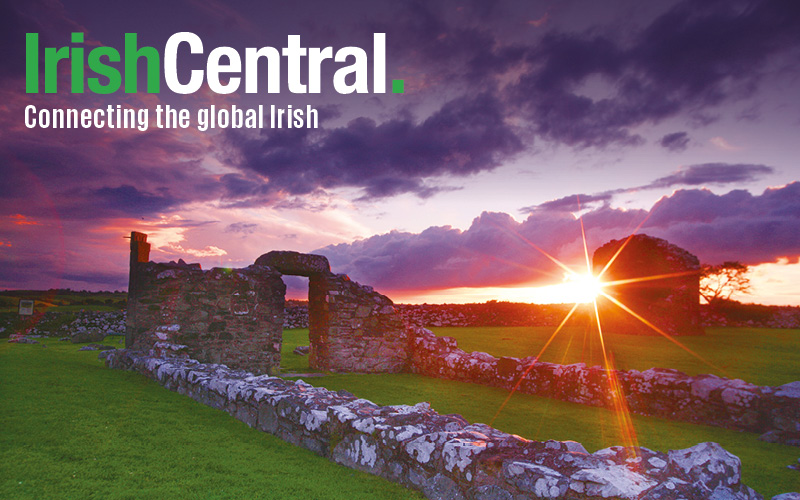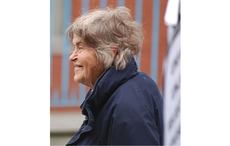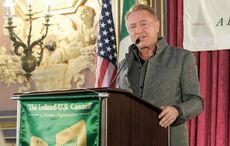For the first time since 1415, we are going to have a conclave or papal election with no Pope to bury beforehand. But the procedures for the election are not affected by this ‘novelty.’ Dan Brown might seem an unlikely source for information on a Papal election but the detailed description in Angels and Demons was apparently taken from a book by a Jesuit scholar and is quite accurate.
When the See of Rome is declared vacant – normally when a Pope dies – most of the senior prelates who were the Pope’s ‘ministers’ resign. Power is entrusted to a cardinal called the Camerlengo, in this case Cardinal Tarcisio Bertone, who under normal circumstances would bury the Pope.
The last papal election took 48 hours, but such speed wasn’t always the case. In the 13th century the papacy was vacant for a year-and-a-half and an election was forced by the people of Rome who locked up the cardinals until a pope was elected. In another case, the people not only locked up the cardinals, they tore off the roof of the building and put the cardinals on a diet of bread and water.
Now, with Benedict’s resignation the cardinals are essentially being given a ‘month’s notice’ and can plan their trip to Rome and think about what they want in the new pope. In a sense, because of the pre-planning that can be brought to bear on this election, there is potentially a lot of time to consider who should be the next leader of the world’s 1 billion catholics.
The cardinals will stay in a specially constructed 5 storey residence inside the Vatican walls, Santa Marta. and will be conveyed by coach to the Sistine Chapel for morning and afternoon sessions there. The process of election must begin no more than 20 days after the see is vacant. Only cardinals under the age of 80 can enter the conclave – the word means ‘with a key’ in Latin, referring to the fact that the Cardinals are locked into the election hall.
There are 119 eligible to vote, 67 of whom were appointed by Benedict and the rest by JPII. Cardinals who are excommunicated can actually attend but not those who have resigned. A cardinal who resigned and joined Napolean Bonaparte attempted to enter the conclave in 1800 but was refused.
On the morning of the conclave the cardinals con-celebrate Mass in St Peter’s Basilica. In the afternoon they gather in the Pauline Chapel in the Apostolic Palace and solemnly process in full red and white regalia with red hats and enter the Sistine chapel, with the doors locked behind them. All telephones, cell phones, radios, televisions and internet connections are removed from use whether in the chapel or in the residence. They cannot leave except in the case of grave illness. Also permitted in the conclave are two medical doctors, a nurse for very ill cardinals, and religious priests who can hear confessions in various languages. These have to swear absolute and perpetual secrecy.
The cardinals swear an oath of secrecy not to discuss the elections outside the Chapel and everyone else is ordered out in the Latin words “Extra omnes,” “Everybody out.” The doors of the Sistine Chapel and the Residence of the Cardinals are closed.
Inside, a meditation is given concerning the grave duty of the cardinals and they are exhorted to “only have God before your eyes.” The rest of the time is spent for prayer and voting in silence, there are no campaign speeches. Negotiations and arguments have to take place outside.
In the Chapel, which dates from the 15th Century, and under the ceiling adorned with Michelangelo's Last Judgement, the cardinals can cast their vote. There will be four ballots daily until a clear majority is found for one candidate.
It is severely frowned upon to seek the office of Pope and canvassing for it is severely prohibited, especially prior to a Pope dying. It is an office bestowed upon a person rather than their contesting for it. However an outsider could be elected pope and in theory it could be a lay person willing to be ordained a priest and bishop but the weight of tradition suggests it will be one of the cardinals gathered in the Sistine chapel. The last non cardinal was Pope Urban in 1378.
However, discussions prior to a ballot among cardinals do occur privately but public campaigning would be counter productive. Dinners are good vehicles for discussions. However, the best known cardinals tend to be the ones that work in the Vatican and meet other bishops, and cardinals when they come on business to Rome.
The ballot is secret and Pope John Paul II abolished two methods of election: by compromise or by common consent. Since 1179, a new Pope requires a two thirds majority. Now, after 33 ballots, a simple majority is enough. If there is no progress in choosing a candidate, a day of prayer is set aside. However, not since 1831 has an election lasted more than four days.
The ballot papers themselves are rectangular with “I elect as supreme pontiff” printed at the top and each cardinal prints or writes a name in a way that disguises his handwriting. One at a time they approach the altar with the folded ballot held up, he kneels and prays and then places the ballot in a silver and gilded bronze urn, much like a wok with a lid. Cardinals called ‘scrutineers’ count the ballots. After the ballots are read aloud they are placed on a thread and placed in another urn. They are then burnt.
Since 1903, white smoke from the chimney of the Sistine Chapel has signalled the election of a pope; black smoke signals another vote.
When a pope is finally elected, the cardinal dean asks him, “Do you accept your canonical election as supreme pontiff?” Rarely does anyone say no. St Philip Benize was offered it in 1271 and fled and hid until another candidate was chosen.
Sacristy of Tears
After the ‘yes’, he is led into the ‘Sacristy of Tears’ or commonly called ‘Room of Tears,’ a small room off the Sistine Chapel. It is here that the enormity of what has just happened hits the new Pope, though the tears may be of sorrow or joy. Traditionally they were said to be tears of humility as a Pope was following in the footsteps of St Peter; others would contend the tears were because essentially the Pope becomes a ‘prisoner’ of the Vatican and would be bowed down by the weight of the office.
The new Pope picks one of three sizes of Papal garments – presumably small, medium or large – and return to the High Altar to receive the homage of the cardinals. Meanwhile, the ballots are burnt in a stove with a chemical which turns the smoke white, telling the world of the newly elected Pontiff.
A Cardinal is then sent to the Loggia of the Benedictions on the façade of St Peter’s where he says: “Annuntio vobis gaudium magnum. I announce to you a great joy! Habemus Papam. We have a Pope!” He then announces the name of the cardinal and the name he has chosen to use as Pope.
The new Pope steps onto the balcony and therefore onto the stage of world and church history. He may grant his first blessing to the world.
Some days later, the new Pope will go down into the foundations of St Peter’s to the tomb of Peter, the first Pope and first bishop of Rome, and pray. Then with all the cardinals, he will process into St Peter’s Square to begin his first public Mass and receive the main symbols of his office: the fisherman’s ring and the pallium.




Comments